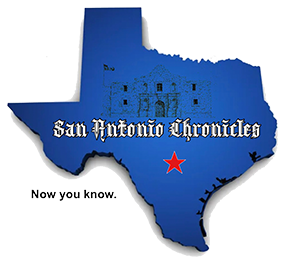DALLAS — As Texas’ main city areas grapple with a glut of vacant places of work, state lawmakers could make it simpler to rework empty workplace and business house into dwellings.
A invoice by state Sen. Bryan Hughes, a Mineola Republican, would successfully permit homeowners of struggling workplace properties within the state’s largest cities to transform that house into residences. The invoice would forbid cities and counties from requiring homeowners of flagging workplace buildings and business properties like buying malls and strip facilities to undergo a rezoning course of in the event that they wish to add residences or condominiums.
The thought is amongst a slate of proposals state lawmakers are weighing to take away limitations to housing building and increase housing choices to place a dent in Texas’ deep housing scarcity — a key driver of the state’s excessive residence costs and rents.
“It’s a easy matter of trying on the housing inventory that’s out there and searching on the rising demand, and each choice to develop these alternatives,” Hughes mentioned in an interview. “The Lord’s not making new land.”
Few locations in Texas have gone untouched by the state’s rising housing prices. Greater than half of the state’s renters are “cost-burdened,” that means they spend greater than 30% of their revenue on protecting a roof over their heads, based on a latest evaluation by the Joint Heart for Housing Research at Harvard College. Dwelling costs have vastly outpaced incomes.
Hughes’ invoice is a part of a collection of proposals state lawmakers are contemplating to permit extra houses to be constructed. A lot of these proposals take goal at cities’ zoning laws, which limit what sorts of houses might be constructed and the place. A rising physique of analysis exhibits that stress-free these guidelines can assist cities add extra houses and include housing prices.
Some native officers are uneasy in regards to the prospect of state lawmakers overriding metropolis zoning laws in a blanket method. Within the Austin suburb of Georgetown, officers are weighing modifications to the town’s growth code to permit accent dwelling models and scale back lot-size necessities, Mayor Josh Schroeder mentioned. These sorts of selections, he mentioned, ought to stay on the native degree.
“To do it on this macro degree that doesn’t think about the variations between Georgetown, Austin and Littlefield just isn’t the best way to deal with land use,” Schroeder mentioned.
The rise of distant work amid the COVID-19 pandemic drove up workplace vacancies in Texas’ main metropolitan areas. Workers in Texas’ largest cities have returned to the workplace at greater charges than their friends in different main U.S. cities, based on information from Kastle Methods, a safety agency that tracks workplace occupancy. Nonetheless, emptiness charges for workplace house within the state’s main city areas stay above pre-pandemic ranges.
As places of work emptied and housing prices exploded, housing advocates, workplace landlords and policymakers more and more eyed office-to-residential conversions to deal with a number of issues. Including residences would assist chip away on the nation’s housing scarcity, they’ve mentioned. Revamping lagging places of work into residences would additionally hold these properties financially viable, staving off blight and persevering with to generate property tax income for native governments and college districts.
Nevertheless, it isn’t a silver bullet. These conversions make up a small share of the nation’s homebuilding. Workplace-to-residential conversions have resulted in practically 28,000 new housing models nationwide since 2016, based on figures from CBRE Group, a business actual property providers and funding agency. Of these, about 2,400 are in Texas. One other 2,800 models are underway or within the works in Texas, out of about 38,000 throughout the nation.
Changing places of work to residences can typically be difficult, builders and actual property specialists have mentioned. For one, not each workplace constructing is sensible to transform into housing owing to components like unwieldy ground plans and plumbing wants.
Zoning laws may get in the best way of office-to-residential conversions — a barrier Hughes is making an attempt to handle.
Texas’ largest cities are likely to routinely permit workplace buildings of their downtowns, the place workplace vacancies are maybe most seen, to turn out to be residences, based on a Texas Tribune evaluation of metropolis zoning codes. Hughes’ proposal would unlock that very same profit for homeowners of workplace buildings outdoors of downtown neighborhoods.
If it turns into legislation, homeowners of different kinds of buildings — together with business buildings, buying facilities and warehouses — who wish to transform their house into residences or condominiums, would additionally not must undergo the rezoning course of.
That course of might be expensive and prolonged, housing advocates and builders say — leading to greater prices for the eventual tenant, if builders aren’t deterred from transferring ahead with initiatives within the first place.
“When there’s extra prices concerned, finally that’s going to must get handed off to the resident,” mentioned Jamee Jolly, who heads The Actual Property Council, a Dallas-based actual property commerce group.
The laws would solely apply in counties with greater than 420,000 residents — 13 of the state’s 254 counties — and municipalities inside these counties which have greater than 60,000 residents.
Graphics by Carla Astudillo, The Texas Tribune
This text initially appeared in The Texas Tribune, a member-supported, nonpartisan newsroom informing and fascinating Texans on state politics and coverage.





